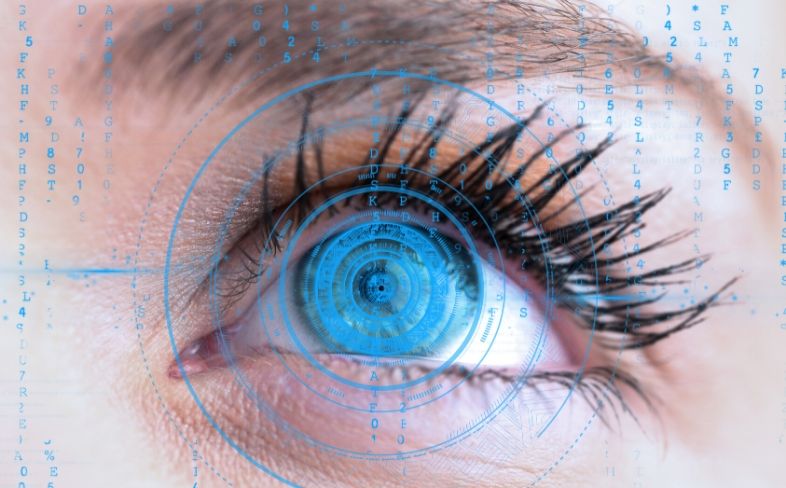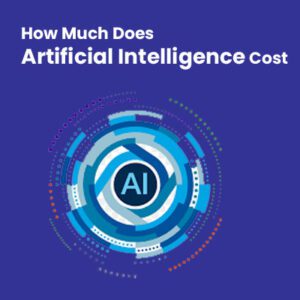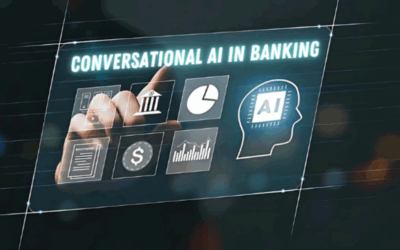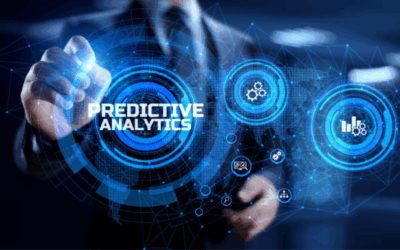Computer Vision Applications In 2025 By Industry
Most Popular Computer Vision Applications in 2025 by Industry
The time of Artificial Intelligence (AI) has arrived and exploded ever like before. Computer scientists/researchers have been dreaming of developing machines that can see & understand the world as humans do. The efforts made led to the advent of computer vision, which is a vast subfield of AI.
In recent times, the application of computer vision in artificial intelligence has taken great leaps. Thanks to improvements in deep learning & AI neural networks. Deep learning is a subdivision of AI that is exceptionally good at processing unstructured data such as videos and images.
The advances have provided the way for boosting the use of computer vision in existing domains and again introducing new ones. In most cases, computer vision algorithms have become an essential component of the intelligent applications and systems that we are using every day.
Computer vision has the hidden power to derive information from digital images, videos, and other visual inputs and delivers useful insights. As it grows in importance, the future of computer vision will be appreciable and help organizations maximize their business efficacy.
In this article, we will look at what is computer vision, computer vision applications benefits, and the future of computer vision.
What Is Computer Vision?
“The construction of explicit, meaningful descriptions of physical objects from digital images.”
To make it easy for you to explain, I am going to explain to you in simple terms.
Computer vision is an interdisciplinary field of AI that allows the computer to understand, process, and analyze digital images, videos, and other input images. Its efficient algorithms can process both static pictures and videos.
It works on enabling computers to see, identify, and process images as human vision does and then provide a suitable output.
One of the driving factors behind the enhancement of computer vision is the amount of data we generate daily (3 million images shared daily) that is used to train and make computer vision better. The expected market size of computer vision is expected to reach US $48.6 billion by 2022.
In less than a decade, today’s computer applications reached 99% accuracy from 50%, making them more precise than humans at swiftly retorting to visual inputs. Sub-domains of computer vision include anomaly detection, image restoration, object recognition, video tracking, and indexing.
How Does Computer Vision Works?
Most people have confusion between computer vision and image processing. However, computer vision is more of a high-level process, and it deals with the analysis of an image/video.
The process involved in computer vision application is like input an image and it will give you the interpretation of the image as output. The computer vision software covers every component of the picture. These modules are then evaluated.
For instance, simple computer vision allows patterns/shapes to be recognized. More advanced applications enable people or animals to be recognized.
The computer vision applications in 2022 are central to automated vehicles & drones as well as augmented reality and facial recognition software development.
The Current State Of Computer Vision
Before we get thrilled about advances in computer vision, it’s good to know and understand the challenges of applied computer vision and AI technologies. While many significant improvements are observed across digital technologies, we are still far away from completely rolling out computational vision algorithms that can make sense of videos and photos in the same manner as humans do.
At present, deep neural networks are the key to computer vision systems, and they are very cool at matching patterns at the pixel level. And the neural networks are very good at classifying images and localizing objects in images.
But when it comes to an understanding of the context of visual data and describing and describing the relationship between various objects, they fail miserably. The current application of computer vision in artificial intelligence shows how much can be accomplished with pattern matching alone.
Here are a few challenges of Applied Computer Vision:
Challenges Of Applied Computer Vision
The current subject is one of the challenging fields of computer science. Enabling a machine to be able to see and procedure what it sees like a human is an adamant thing.
Not least because we are still learning precisely how human works. If you want your computer vision software app to be successful, recognition must become robust. Quick and faster image detection, identification, classification, and verification are a few significant computer vision applications Benefits.
Along with it, an effective CV system developed using AI, facial recognition, and computer vision like intelligent technologies will be able to identify the pinpoints in a photograph or image. These types of computer vision applications can segment objects, categorize the pixels in an input image, and successfully recognize the objects faster and easier.
Don’t get relaxed once recognition is achieved because it should analyze the image correctly. If the same thing is applied to a video, it requires accurate motion analysis, which permits the system to guess the velocity of objects in the video.
All the above issues must be solved to continue growing in value and importance. USM, the best AI development company can build the best digital solution for your business. Let’s Talk!
Computer Vision Applications In Various Industries
1. Computer Vision Applications In Automotive
Automotive manufacturers across the world are encouraging automation to improve operational and production processes and reduce manual efforts and cost overheads.
Computer vision is taking the automotive industry by storm. The reason for my above statement is companies like Tesla and Waymo are making maximum usage of computer vision, and they have very positive results.
Recommend: Emerging Technology Stats That You Must Know in 2021
Applications of computer vision for the automotive sector
- Accurately picks vehicle parts during the assembly process
- Improves the efficiency of self-driving cars
- Ensure safe driving and optimize transportation
- Detects machinery defects
- Used for stamping
- Computer vision-enabled systems vehicle parts digestions accurately
- The technology helps manufacturers to determine the shape and size of stamped parts
- Categorizes tires based on patterns and matches to the vehicle wheels
- Used for performance analysis
Recommend: Artificial Intelligence in the Transportation Industry
Here is an example of a computer vision application in automotive. Waymo is equipping cars with cameras and CV systems that can detect 360-degree views around the vehicle, and it tracks the movements of pedestrians, vehicles, cyclists, and other objects when they are around 300 yards. By doing so, it can detect potential hazards one can take early action. The company tests the technology on 7 million miles of public roads to train vehicles for safe navigation through daily traffic.
It means that the autonomous car will be able to read temporary road signs, objects, people, & give way to oncoming emergency vehicles.
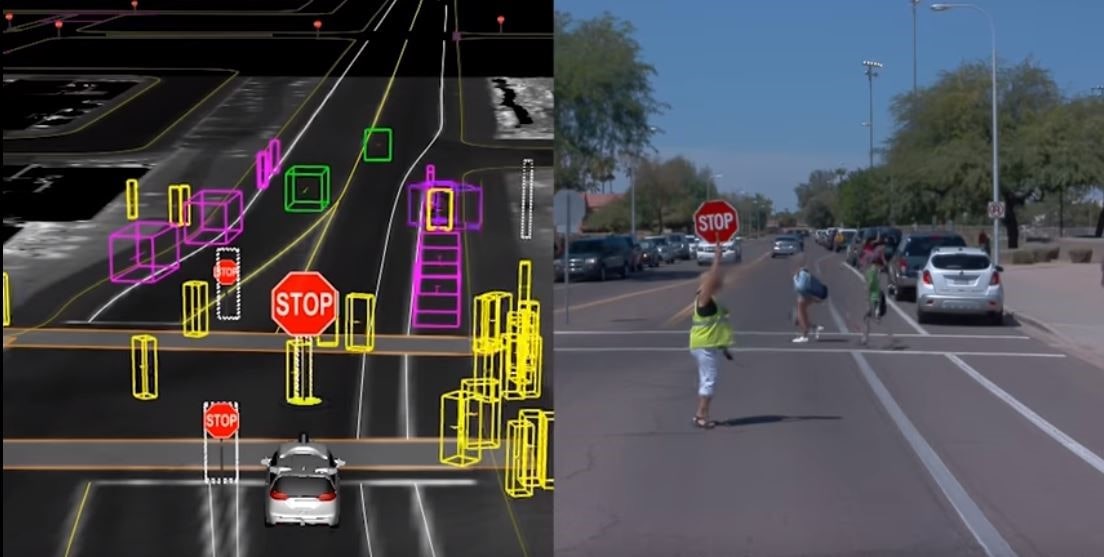
This application of computer vision sees it working alongside deep neural networks, allowing the car to navigate in busy streets safely. The company is planning to remove noise in sensor data for a self-driving car with the help of Machine Learning. Currently, the company collaborated with Chrysler and Jaguar to continue developing automated vehicles.
Recommend: How Automotive Industry Is Evolving With Artificial Intelligence?
2. Computer Vision Applications in Healthcare
Computer vision applications in healthcare are incredible. Believe it or not, 90% of all medical data is image-based. There are multiple uses for computer vision in the medical field. By allowing new medical diagnostic methods to examine mammography, X-rays, and other scans to monitor patients to detect problems earlier and assist with surgery, medical professionals and institutions are using computer vision-powered systems.
Recommend: The future of the healthcare sector will be around AI
More specifically, the demand for computer vision applications in healthcare is increasing for intelligent diagnostics assistance.
Computer vision is being utilized to aid diagnose health conditions. Computer vision is enabling life-saving interventions to be made. When used along with sensors, the technology allows medical professionals to provide smart medical services. Yes. Computer vision applications help in identifying and detecting diseases in the earliest stage.
For instance, the ChironX application uses computer vision to read retinal fundus images. It takes the help of deep learning to sense eye malady at its initial stage. Along with the above, it will predict the risk of eye disease & systemic diseases such as cardiovascular ailments from happening.
The application we are using with the help of computer vision is not only accurate, but it is also cost-effective and non-invasive. Subsequently, patients can be diagnosed more effortlessly & consistently.
Recommend: Powerful use cases that show the significance of AI in healthcare.
3. Computer Vision Applications In Retail
Here are the significant computer vision applications in retail & e-commerce.
Computer vision has made a splash in the retail sector as well. In recent times, Amazon is leading the way in developing new technology in most of its sectors, and mainly it showed its presence in the retail industry.
In 2018 the Amazon company has shown a smart store called Amazon Go. Initially, it has automated the store that has no cashiers or checkout stations.
With the help of computer vision, deep learning, sensor fusion, and other sophisticated tools enable customers to pay for merchandise without the need for a checkout.
However, an impressive step makes it easy for customers and owners by automatically billing through customer Amazon accounts. Along with Amazon, the Chinese internet giant Lenovo has also jumped into this bandwagon. This Cv application makes the need for cashiers mostly redundant.
Based on some of the reports, Amazon Go stores still consist of employees to assist customers, check ID, and stock shelves. The staff at Amazon Go stores also work in the background to train algorithms if they inaccurately identify which item has been detached from the shelf.
Recommend: What Artificial intelligence can do for the retail industry?
Using AI-powered computer vision systems on-premises will reduce in-store theft. In the retail sector exclusively in groceries, StopLift claims to have developed a computer vision application that could minimize theft and other various losses at store chains. It developed a product called ScanItAll that detects cashier errors or checkout who avoid scanning, also called Sweethearting.
Sweethearting is the cashier’s act of fake scanning of products at the checkout in cooperation with a customer who could be a family, fellow employee, or friend. ScanItAll can be easily installed into the store’s existing point of sale systems or cameras, making integration easy.
Using various algorithms, StopLift claims that ScanItAll can detect sweethearting behaviors such as stacking items on top of another, covering the barcode, skipping the scanner & directly packing the products. To get a better idea of technology, please click on the below link.
Based on the new gather data, the company claims to have the technology installed in some of the supermarkets in Massachusetts, Rhode Island, and Australia.
Recommend: Top use cases of AI in the retail industry.
4. Computer Vision Applications in Banking and Finance
In previous articles, we have discussed the AI in the banking & finance sector that involved fraud detection & natural language processing.
Recommend: The power of AI & ML technologies in the Banking & financial sector.
Some CV technology has also found its way into the banking industry as well. Computer vision technology already started influencing on baking & finance sector.
Mitek systems provide image recognition applications that make use of machine learning to classify, extract information, and authenticate documents like ID cards, checks, passports, and driver licenses. Mitek system applications enable customers to use their mobile device to take a photograph of their ID. It can be sent to the bank where CV software verifies the legitimacy of the document.
Using CV systems to automate verification helps to fasten identity checks. It, in turn, fastens up business process & financial transactions. While in most of the cases, images will be rejected due to poor quality, in such situations, the CV can correct images faults such as poor lighting or distortion. One bank called Mercantile Bank of Michigan is the client of Mitek systems. The primary reason behind the implementation is to magnify its retail portfolio & associated core deposits.
Mitek systems took one month to deploy the application. After 4 months of implementation, 20% of online customers at banking using this CV application. This CV application allowed customers to verify their identity in a faster and secure manner. By doing so, human error is removed from the process. As we are successfully scanning, the ID means checks and transactions can be carried out securely and quickly.
Recommend: Top use cases of Artificial intelligence in the Banking sector
5. Computer Vision Applications in Education
Here are the top applications of computer vision in education sector.
- Computer vision and facial recognition software is used for mask detection and social distancing at premises and is very important in this covid pandemic
- Computer vision apps are best for detecting intrusions
- Monitoring and management of attendance
- Computer vision is best for remotely monitoring facial expressions of students in classrooms
- Used for detecting doubtful unattended objects or people
- Used for parking slot management
These are a few popular and well-known Computer Vision Applications in Education.
6. Application Of Computer Vision In Security
In recent years, the use of computer vision-based security systems are increasing to prevent unexpected issues and improve security levels. These intelligent surveillance systems continuously watch security footage, monitor people in 360-degree view, and identify suspicious activities.
By equipping a camera for computer vision applications, organizations are increasingly placing computer vision systems in their office and home spaces to ensure high-level security and safety.
Besides, computer vision applications in security is also widely deployed for optimizing security levels at airports, public spaces, and high-traffic areas.
7. Computer Vision Applications in Fitness & Sports
Computer vision applications are gaining popularity in the sports and fitness industry. It is used for detecting the coordinates of players and objects. It is widely used by sports authorities to accurately detect objects continuously throughout the game and track the performance of each player. Here are a few best applications of computer vision in sports.
- Tracking the movements of players
- Computer vision-based action recognition and classification software collects data and detects events such as goals, misses, shots, etc., with accuracy percent
- Computer vision-powered fitness coach apps capture movements of the aimed person
- Monitors performance of people doing exercises
- Point out mistakes while doing workouts
Similarly, computer vision in cross-industry applications, Computer Vision Applications in Manufacturing & Mining, and Computer Vision Applications in Precision Agriculture are also grabbing the market attention with their intelligent image recognition abilities.
Conclusion
It’s all about the usage of computer vision applications increased in various industries. Some of the industries have adopted the technology faster than others. How much may be computer vision technology increasing it continues to rely on the human effort to monitor, interpret, analyze, control, and decision-making. In addition to helping the automation, computer vision allow stores to operate with minimal human intervention.
As machines and humans continue to collaborate, the human workforce will be freed up to emphasis on higher-value errands because the tools will computerize the process that relies on image recognition.
If you are planning to use computer vision applications and want to clear your myths on it, contact USM Business Systems today.
